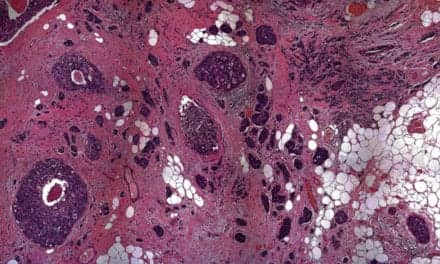Summary: Researchers developed a new diagnostic test combining a field-effect transistor with paper-based technology and machine learning, achieving high accuracy and low-cost at-home testing potential.
Takeaways:
- Innovative Combination: The test merges the sensitivity of field-effect transistors (FETs) with the affordability of paper-based diagnostic cartridges, commonly used in at-home tests.
- High Accuracy: The system demonstrated over 97% accuracy in measuring cholesterol levels compared to clinical laboratory results.
- At-Home Testing Potential: The platform offers a reusable FET system with disposable cartridges, aiming to transform at-home testing by detecting multiple biomarkers from a single sample.
A new diagnostic test system jointly developed at the University of Chicago Pritzker School of Molecular Engineering (PME) and UCLA Samueli School of Engineering fuses a powerful, sensitive transistor with a cheap, paper-based diagnostic test. When combined with machine learning, the system becomes a new kind of biosensor that could ultimately transform at-home testing and diagnostics.
Paper-Based Cartridges
Led by Professor Junhong Chen, at the University of Chicago and Professor Aydogan Ozcan at UCLA, the research team combined a field-effect transistor (FET)—a device that can detect concentrations of biological molecules—with a paper-based analytical cartridge (the same type of technology used in at-home pregnancy and COVID tests.)
The combination unites the high sensitivity of FETs with the low-cost of the paper-based cartridges. When combined with machine learning, the test measured cholesterol in a serum sample with over 97% accuracy, as compared to results from the CLIA-certified clinical chemistry laboratory at University of Chicago Medicine (led by Prof. KT Jerry Yeo).
The research, published in ACS Nano, was conducted in collaboration with Ozcan’s team at UCLA, which specializes in paper-based sensing systems and machine learning. The result is a proof of concept that could eventually be used to create inexpensive, highly accurate, at-home diagnostic tests capable of measuring a variety of biomarkers of health and disease.
“By addressing the limitations in each component and adding in machine learning, we have created a new testing platform that could diagnose disease, detect biomarkers, and monitor therapies at home,” says Hyun-June Jang, a postdoctoral fellow and co-lead author on the paper along with Hyou-Arm Joung of UCLA.
A New Paradigm for At-Home Testing
At-home diagnostic tests, like pregnancy or COVID tests, use paper-based assay technology to detect the presence of a target molecules. While these tests are simple and low-cost, they are largely qualitative, informing the user whether the biomarker is present or not.
At the other end of the testing spectrum are FETs, originally designed for electronic devices. Today, they are also used as highly sensitive biosensors capable of real-time biomarker detection. Many believe FETs are the future of biosensing, but their commercialization has been hindered by the specific testing condition requirements. In a highly complex matrix such as blood, it can be difficult for FETs to detect a signal from an analyte.
Chen’s and Ozcan’s teams set out to combine both technologies to create a new kind of testing system. The paper fluidic technology—specifically, its porous sensing membrane—reduced the need for the complicated, controlled testing environment normally required by the FETs. It also provides a low-cost basis for the system, since each cartridge costs about 15 cents.
When the team integrated deep-learning kinetic analysis, it improved accuracy and precision of the testing result within the FET.
“We increased the accuracy and created a device that altogether costs less than fifty dollars,” Jang says. “And the FET can be reused with disposable cartridge tests.”
Testing the New System
To test the system, the team programmed the device to measure cholesterol from anonymized, leftover human plasma samples. Across 30 blind tests, the system measured the cholesterol with more than 97% accuracy—far exceeding the total allowable error of 10 percent, according to CLIA guidelines.
The team also conducted a proof-of-concept experiment that showed the device could incorporate immunoassays, which are used widely in the quantitation of hormones, tumor markers, and cardiac biomarkers.
“It is a classic diagnostic system made much better, which will be important as at-home testing and diagnostics continue to become more popular in the U.S. healthcare system,” Jang says.
Next, the team will develop the system for immunoassay testing and ultimately hope to show how the system can detect multiple biomarkers with a single sample input. “This technology has the potential to detect multiple biomarkers from a single drop of blood,” Jang says.
The team is commercializing the technology through the start-up Kompass Diagnostics, Inc, which has received initial seed funding.
Other co-authors on the paper include Artem Goncharov, Anastasia Gant Kanegusuku, Clarence W. Chan, Kiang-Teck Jerry Yeo, and Wen Zhuang.




